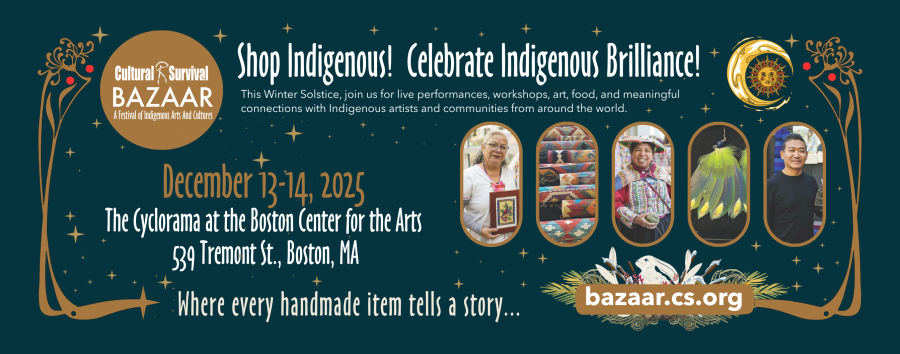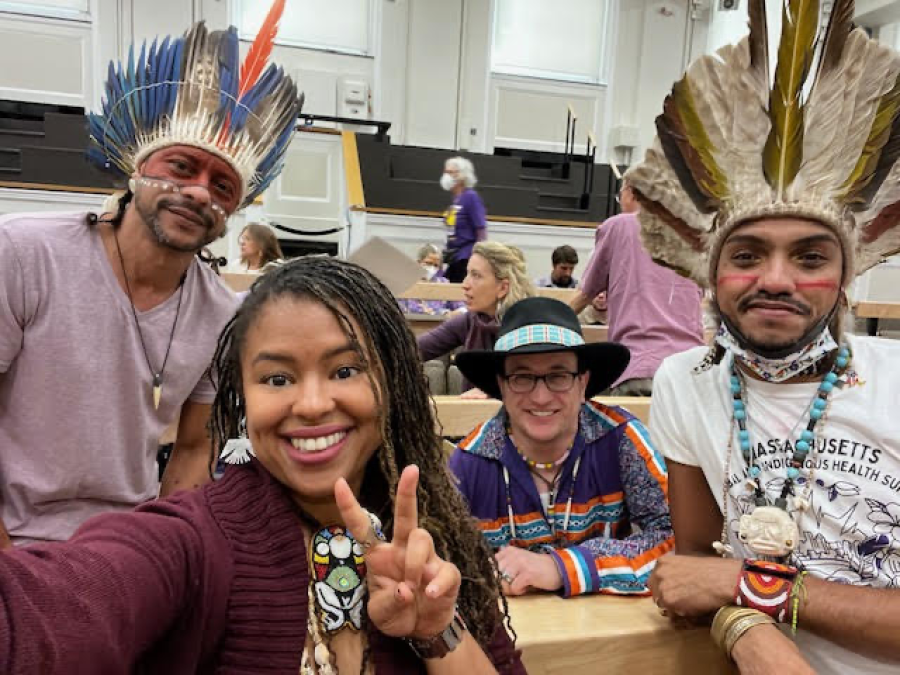
By Phoebe Farris (Powhatan-Pamunkey)
As journalists, we are asked to write about the “five w’s:” who, what, when, where, and why. Sometimes it is hard to adequately report when there are so many “whos.” And that is the case for the three days and nights at the Kennedy Center’s program, First Peoples Fund’s “We The Peoples Before,” which was held June 30-July 2, 2022, in Washington, D.C. The complete list of “whos” encompasses a long list of sponsors, speakers, performers, artists, and academics. My condensed list is comprised of the few I personally briefly talked to, interviewed, took photos of, or knew before in some capacity.
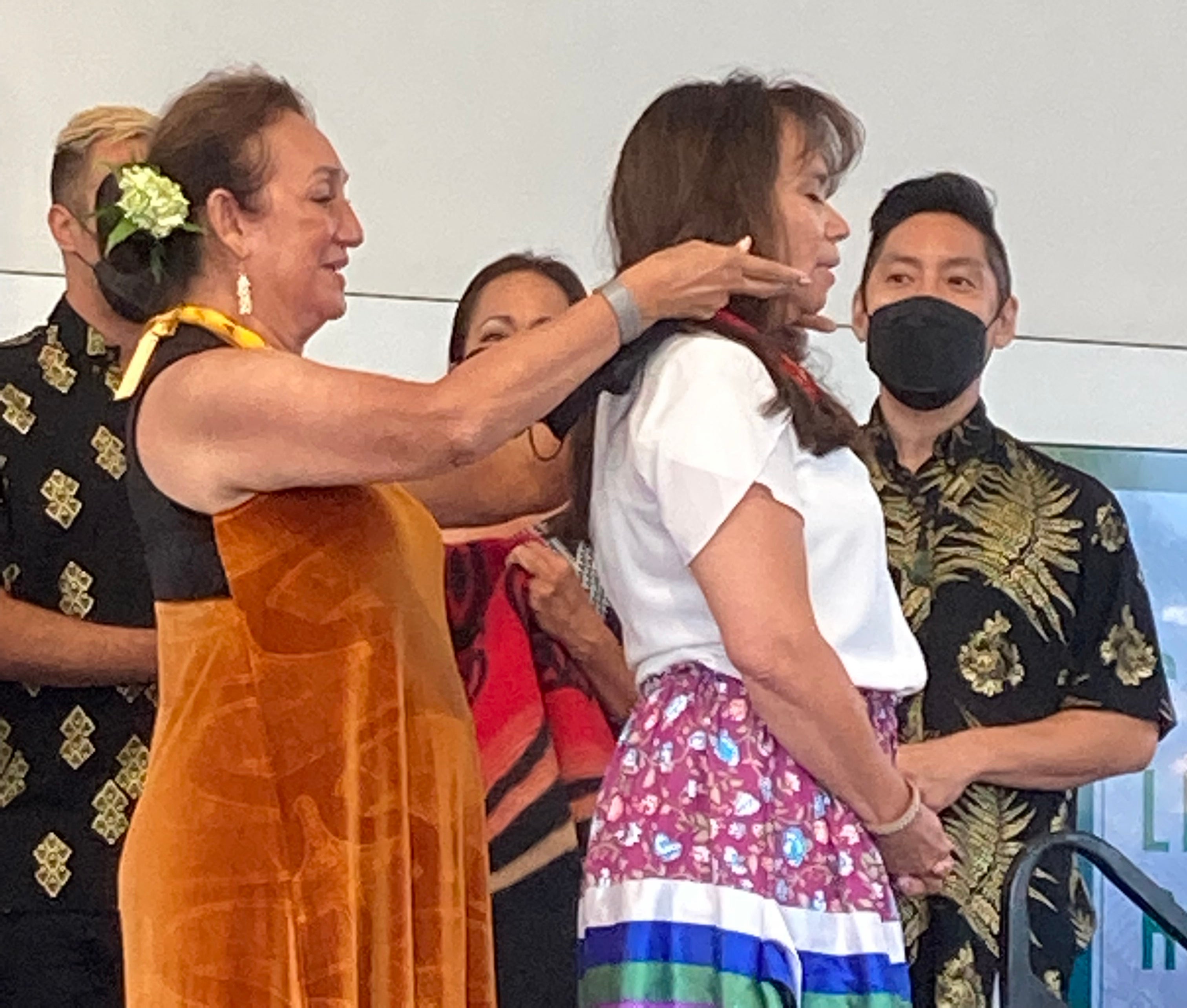
Lori Pourier (Oglala Lakota) being honored. Photo by Phoebe Farris.
Lori Pourier (Oglala Lakota) has served as President and CEO of the First Peoples Fund since 1999. First Peoples Fund is an organization that “honors and supports the Collective Spirit of Native artists and culture bearers through fellowships, grants, and community based partnerships.” Pourier is deeply invested in the First Peoples Fund’s Indigenous Arts Ecology model and movement building strategies as well as its Jennifer Easton Community Spirit Awards, which honor Native culture bearers who give of themselves to bring spirit back to the community.
Artist and performer Carlton Turner serves on the boards of First Peoples Fund, Imagining America, Project South, and the National Black Food and Justice Alliance. Turner was a performer and contributing writer for the “We The Peoples Before” stage production at the Kennedy Center Eisenhower Theater.
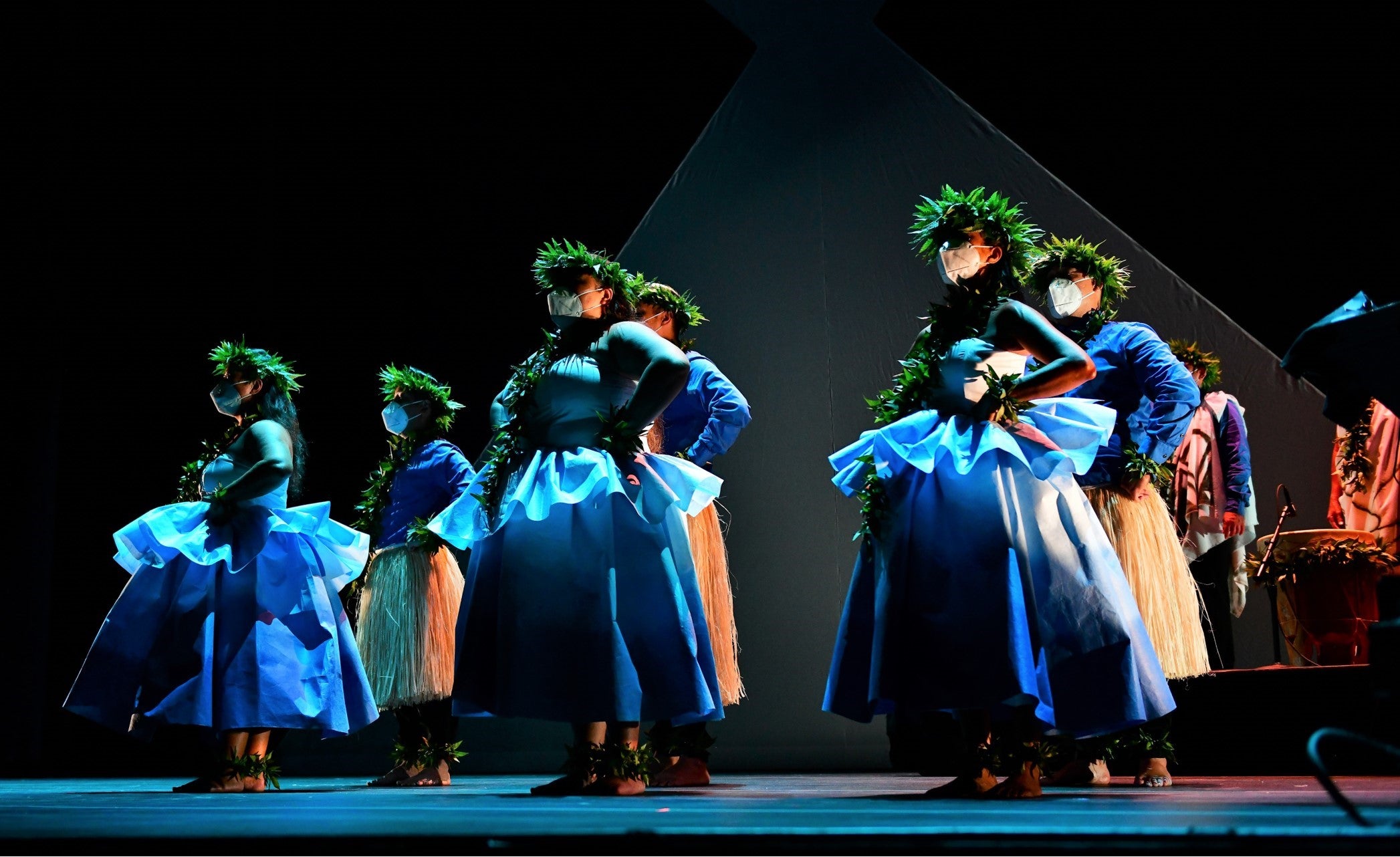
Pua Ali‘i ‘Ilima Halau. Photo by Kenji Kawano.
Rick West (Cheyenne /Arapaho) is the founding Director of the Smithsonian’s National Museum of the American Indian, President Emeritus of the Autry Museum of the American West, member of We The Peoples Before Wisdom Council, and was one of the honorees of the Community Spirit Awards.
Joy Harjo (Muskogee Creek), performer and contributing writer for the stage production “We The Peoples Before,” is the 23rd U.S. Poet Laureate. She is the first Native American and only the second person to serve three terms in the role. A renowned musician who performs nationally and internationally, Harjo wowed the audience with her saxophone and her poetry.
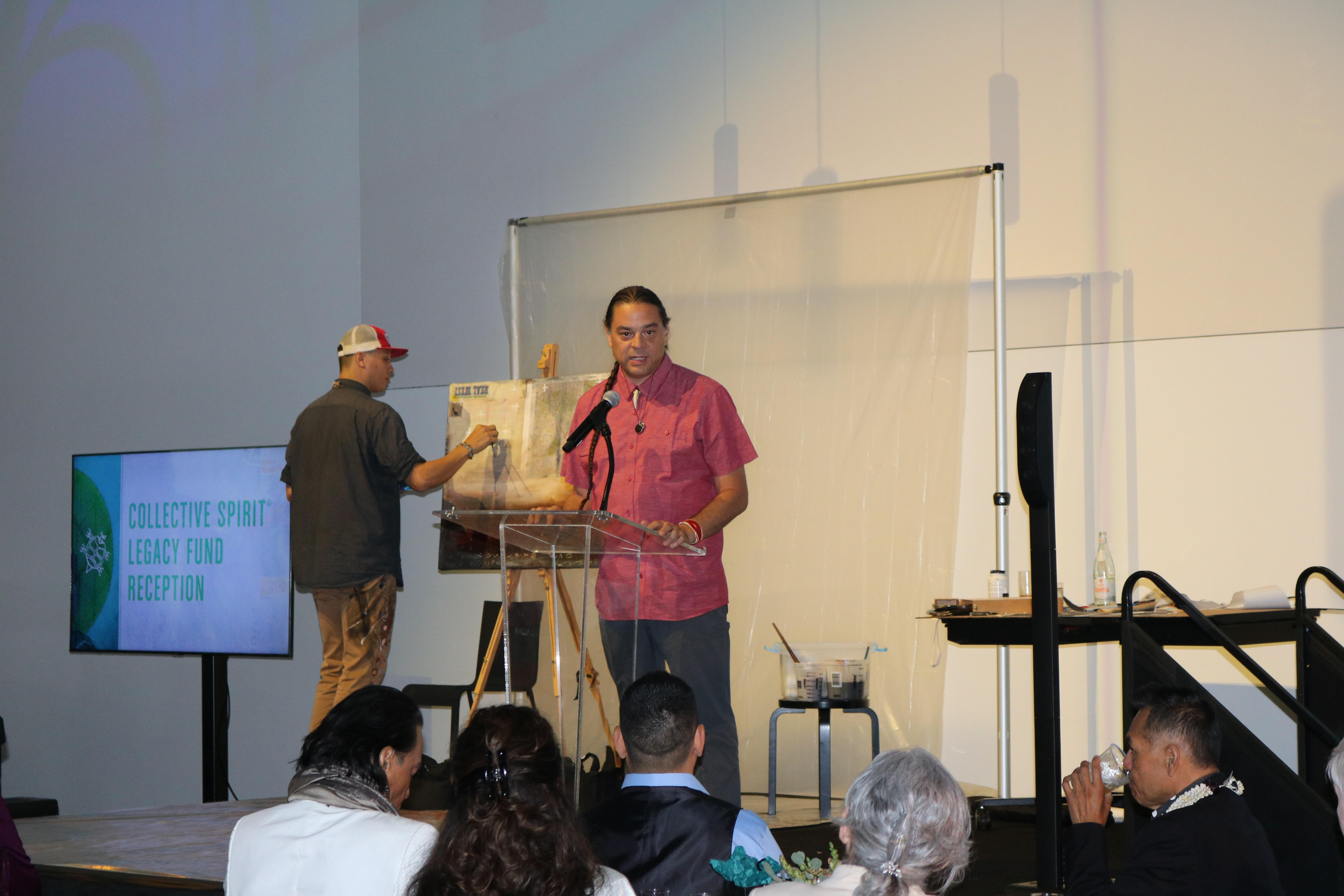
Ben Pease (Crow, Northern Cheyenne, Hidatsa, Cree). Photo by Phoebe Farris.
Ben Pease (Crow, Northern Cheyenne, Hidatsa, Cree) is an award-winning Indigenous creative. He engaged in an in-depth artist conversation with Rick West and also created a painting on stage for three days during various award ceremonies.
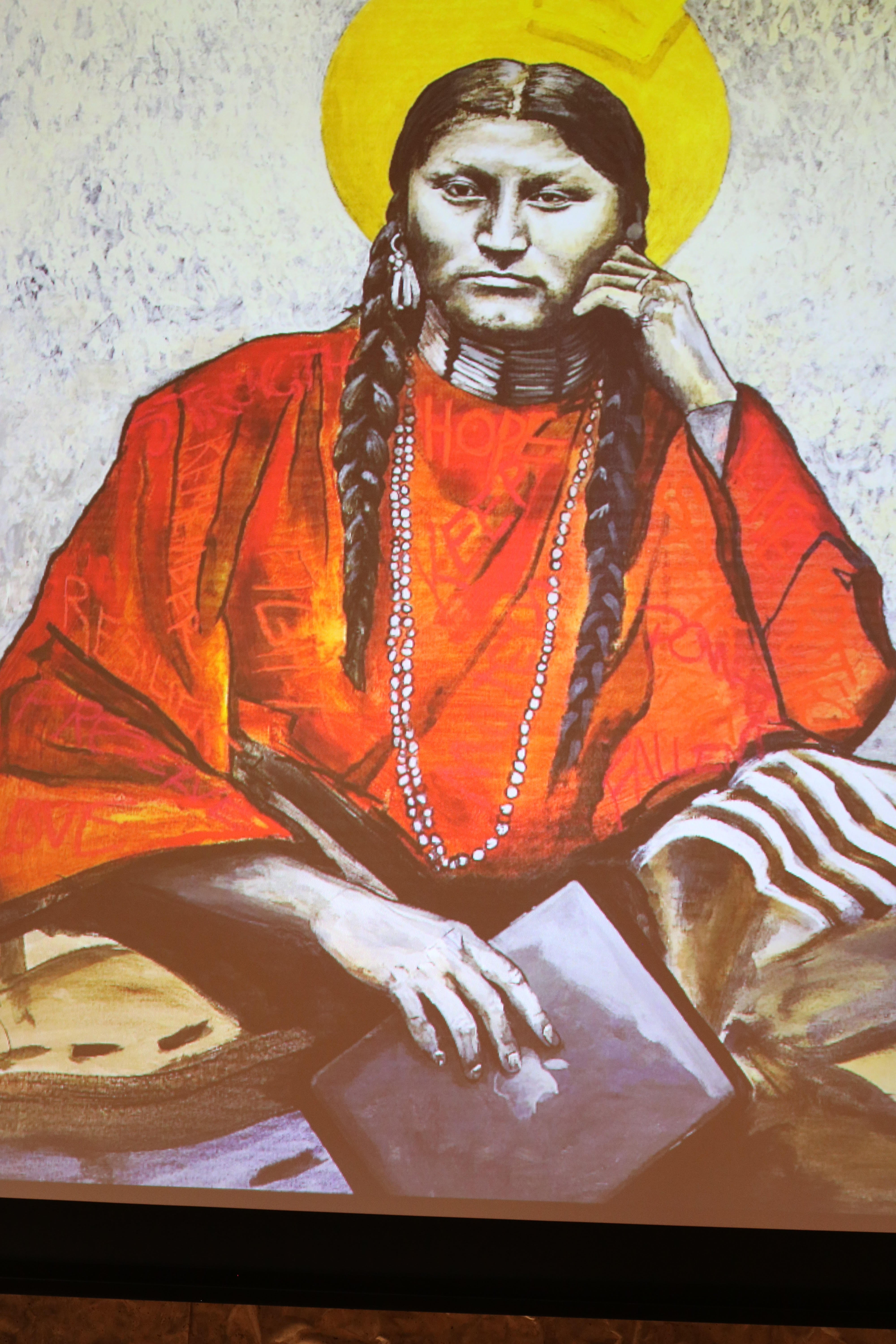
Painting by Ben Pease (Crow, Northern Cheyenne, Hidatsa, Cree). Photo by Julian Kunnie.
Pura Fe’ Crescioni (Tuscarora/Taino), is a renowned performer and writer. Angela Miracle Gladue, a.k.a Miss Chief Rocka (Cree Frog Lake First Nation), also performed in “We The Peoples Before.” Crescioni is the founding member of Ulali a capella trio and performed Native blues based on a blend of her Tuscarora southern roots and its ties to a Nigerian past. Miss Chief Rocka energized the younger audience with Native hip hop, which she began performing in 2003. She tours as one of the lead dancers for the Halluci-Nation (formerly A Tribe Called Red). The other 17 talented First Peoples Fund and 52 performers can be found at firstpeoplesfund.com
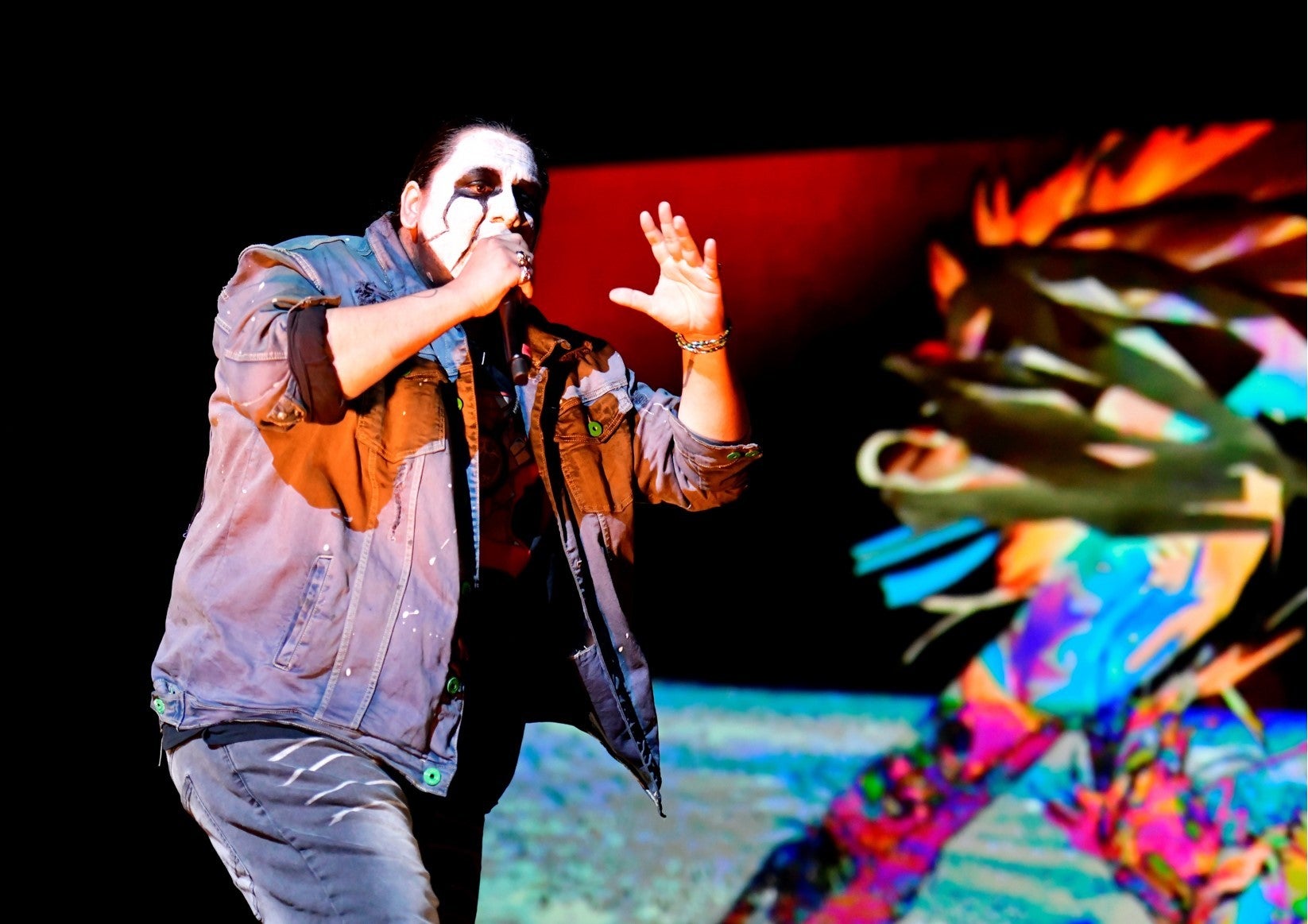
Talon Bazille. Photo by Bazhnibah.
First Peoples Fund’s "We The Peoples Before: 25th Anniversary and Celebration of Native Cultural Expression and Sovereignty" was celebrated in conjunction with its host, the Kennedy Center for the Performing Arts’ 50th anniversary. It was a three-day celebration with Indigenous foodways cooking demonstrations, discussions, crafts workshops, performances, films, awards dinners, education workshops, and a continuing education and impact initiative. The program also honored Pourier “for her vision and persistence to see our artists and culture bearers honored in these halls, and the founder of First Peoples Fund, Jennifer Easton, for her vision and generosity.
“We The Peoples Before” addressed the diversity of nations, cultures, languages, philosophies, spiritual beliefs, peoples, and practices rooted in land and territories in what is now Canada, the continental United States, Alaska, and Hawai’i, long before the founding of the United States and the ratification of the U.S. Constitution. The goals of We The Peoples Before were to celebrate Native cultural expression and sovereignty through performance, story, and education; to embody how we walk on this land; to showcase Indigenous knowledge and approaches to stewardship and environmental justice; to explore the intersection of Black and Native experiences; and to celebrate thriving Native communities throughout history, today, and for generations to come.
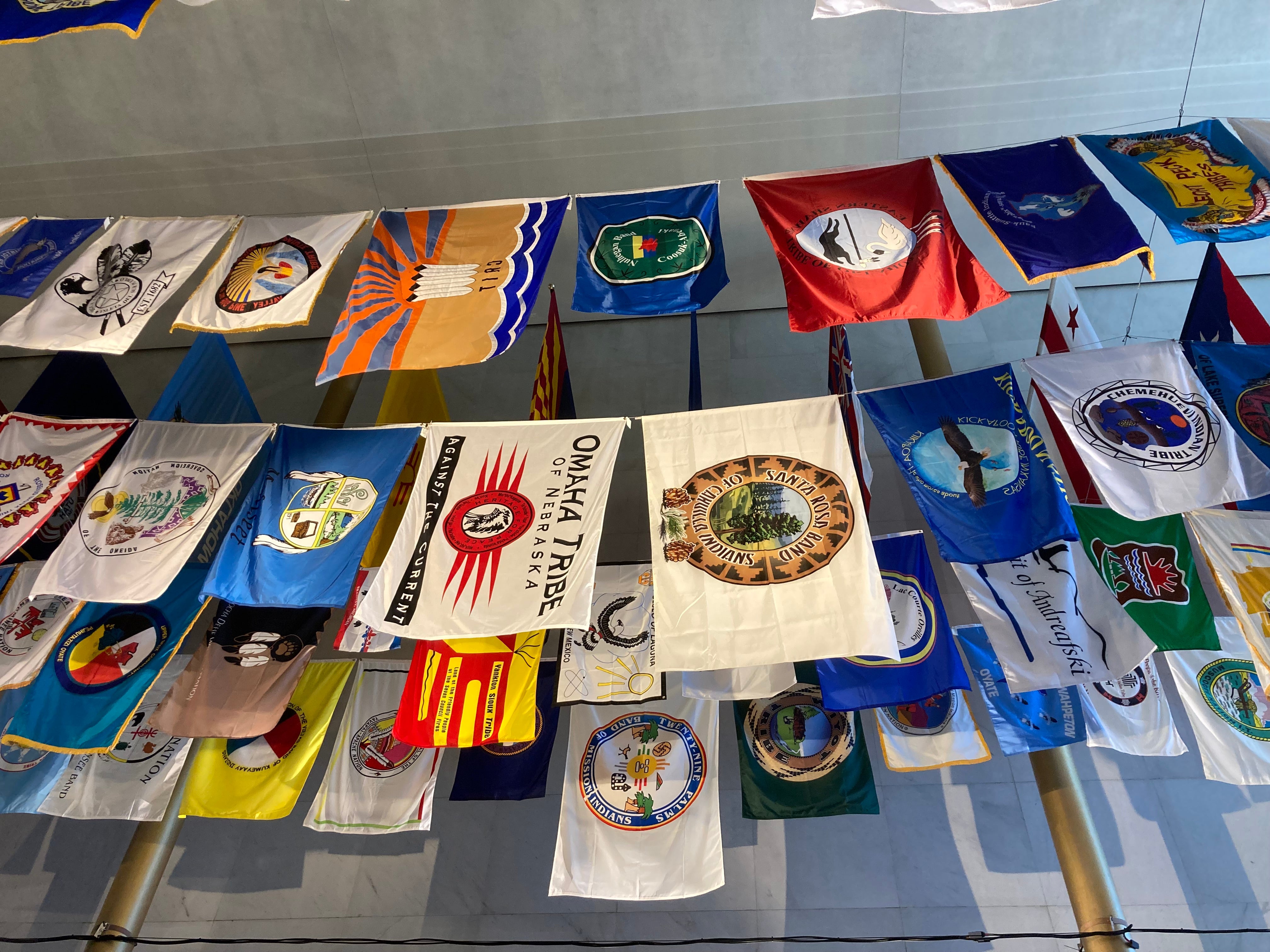
Photo by Phoebe Farris.
Entering the Hall of States in the Kennedy Center, visitors encountered more than 100 flags representing Tribal Nations hanging alongside the flags from all 50 states, the U.S. territories, and the District of Columbia. The event brochure states, “Tribal Nations are sovereign and join with the federal and state governments as part of the family of governments. Each flag of the 574 federally recognized Tribal Nations and other state-recognized Tribal Nations represent their own distinct governments,” carrying visual representations of Native cultures and worldviews, showing unique symbols and images distinguishing them from other Tribes or states. This special display that attendees viewed when entering the Hall of States honored “Native artists, culture bearers, and the communities they represent, with each flag celebrating the strength and resilience of our Tribal Nations.”
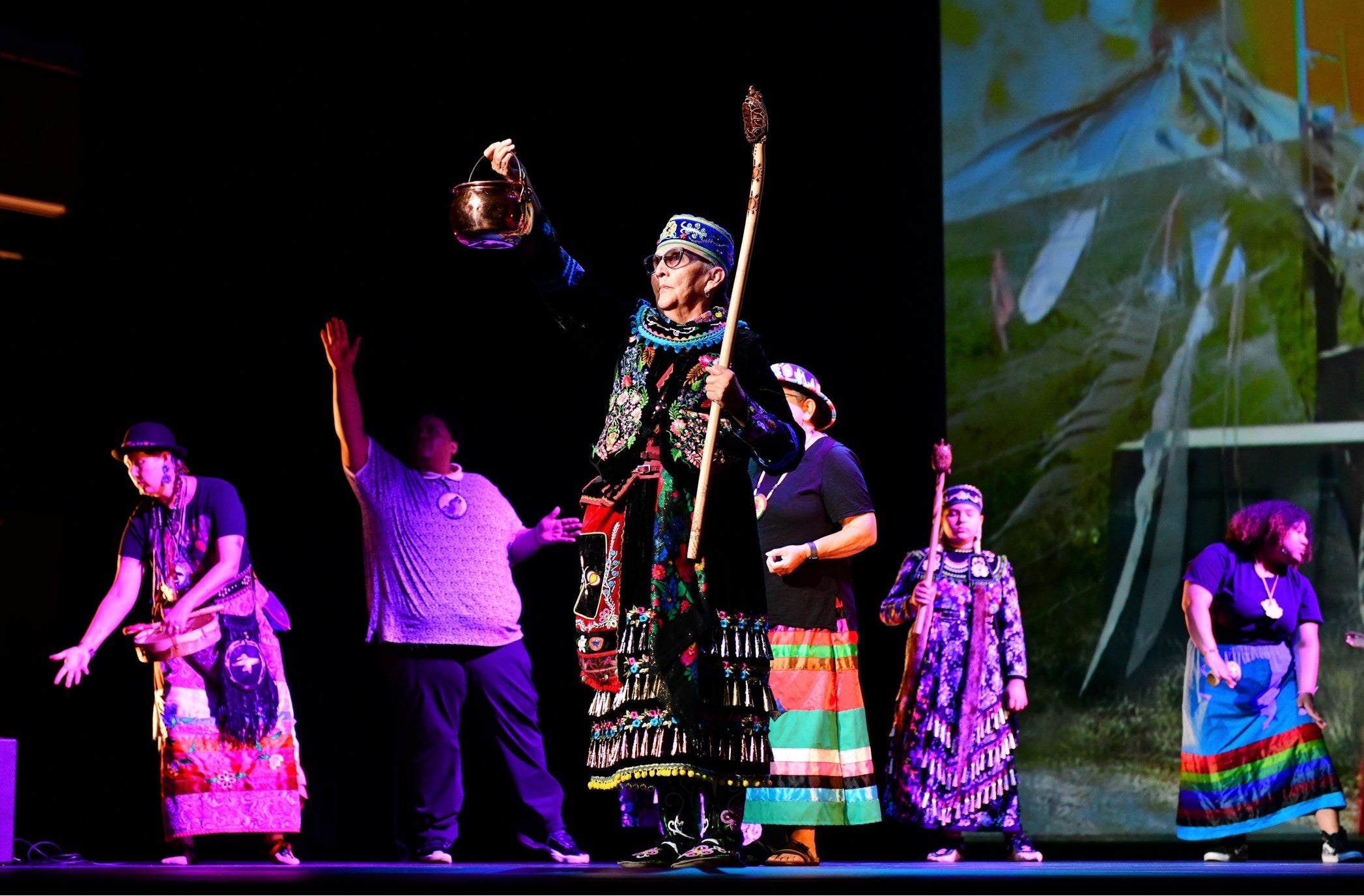
Jingle Dress Dancers. Photo by Kenji Kawano.
What does one do after experiencing a weekend of Native-themed scholarly panels, viewing documentary films, participating in crafts workshops, attending stage performances, witnessing award ceremonies for Native artists and community volunteers, eating traditional Indigenous meals, and walking in a procession below 100 hanging Tribal flags? The choices are many: go home to decompress and relax, find a powwow to attend for some more excitement, read a book written by and/or about Native Peoples, better still write a book, poem, song, article, or letter to an editor, send a check to your favorite Native non-profit, volunteer for your favorite Native non-profit, campaign for a progressive Native candidate, learn a new skill such as beadwork, pottery, or drumming, take a Native language class, say prayers based on your spiritual beliefs and prayers for trauma healing, prayers for racial unity/inclusion, prayers for peace, prayers for our environment, the land, water, sky, and celestial bodies.
The possibilities are almost limitless. But do something!
--Phoebe Mills Farris, Ph.D. (Powhatan-Pamunkey) is a Purdue University Professor Emerita, photographer, and freelance art critic.
Read: "We The Peoples Before: A Conversation with Joy Harjo"
Read: "We The Peoples Before: A Conversation with Rick West"

